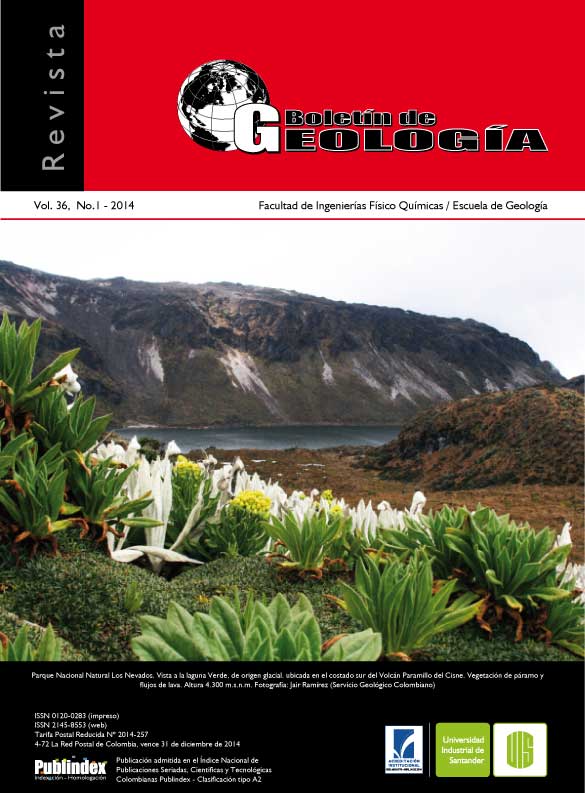PETROGENETIC CONSIDERATIONS AND GEOCHRONOLOGY OF PORPHYRITIC IGNEOUS ROCKS EXPOSED IN THE VENTANAS CREEK (ARBOLEDAS, NORTE DE SANTANDER - COLOMBIA): METALLOGENIC IMPLICATIONS
Published 2014-05-22
Keywords
- Ventanas Creek,
- Arboledas,
- Neogene,
- Metallogeny,
- Santander Massif
- Colombia ...More
How to Cite
Abstract
Around the Ventanas creek (southwestern sector of the Arboledas town, North Santander), porphyritic igneous rocks of rhyodacitic composition have been recognized and dated by zircon U-Pb methods using LA-ICP-MS (Laser Ablation - Inductively Coupled Plasma - Mass Spectrometry) yielding an age of 13.9 ± 0.2 Ma (Langhian; Miocene, Neogene). Petrographic and geochemical data obtained from these rocks indicate that their origin is likely subduction-related, and that they were emplaced in a continental magmatic arc context. The high Sr/Y values (between ~ 44.0 and 94.3) and the absence of marked negative Eu anomalies suggest that the related magmas had high volatile contents, and therefore may have a high potential to form Cu-Au-Mo porphyry mineralization. Considering that the Neogene magmatism has been also reported in the California-Vetas Mining District (located ~40 km to SW of the studied area), where it is known to be related to metallogenic processes, we infer that the magma emplacement could have been facilitated by the high crust permeability generated by NE-trending faults affecting the Santander Massif (e.g. Arboledas-Suratá and Cucutilla faults). Therefore, other areas located along these structures can be considered of great interest for mineral exploration because of the related magmatic-hydrothermal processes.
